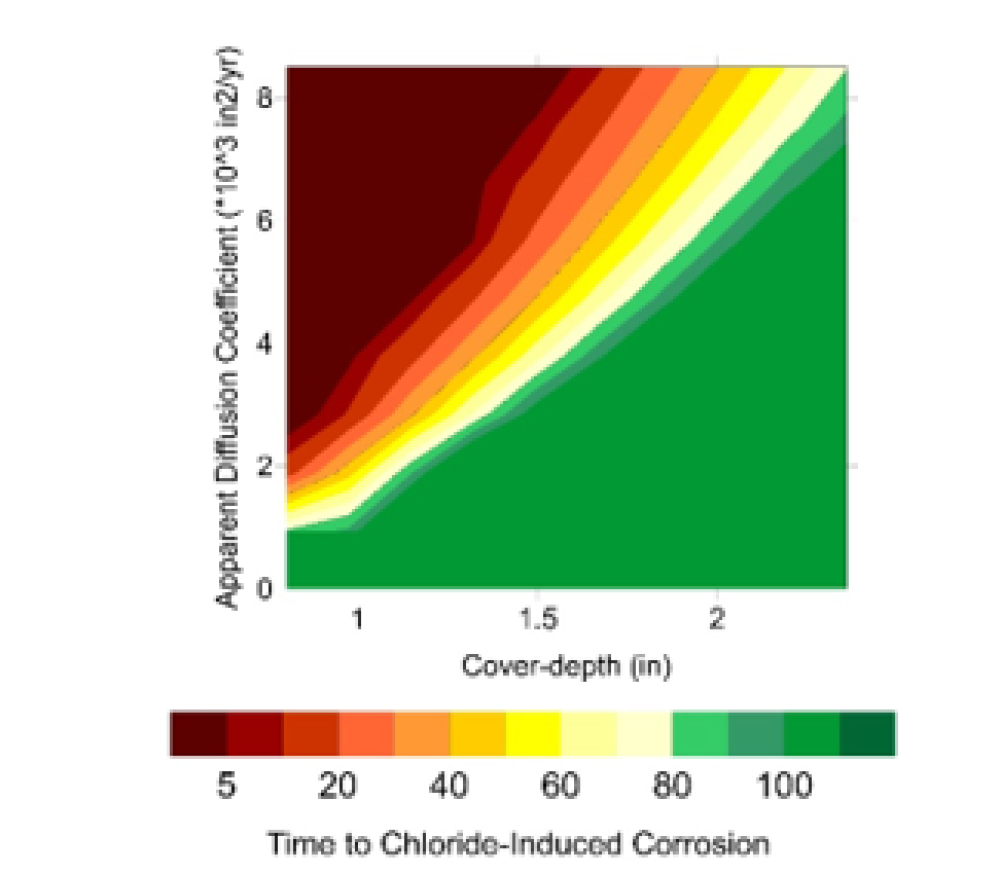What is Service Life Modeling?
Service life modeling and life cycle cost analysis are the analytical basis for assessing preferred options for new construction and rehabilitation projects. Service life modeling uses mathematical analyses to predict the durability and longevity of new and existing structures. Service life modeling allows you to estimate the time to initiate corrosion, develop optimized repair strategies for reinforced concrete, and perform life cycle cost analysis. Data collected during an on-site concrete and corrosion evaluation is coupled with service life modeling to analyze existing structures.

What Factors Affect the Service Life of Concrete Structures?
There are many factors that concrete service life models take into account, such as concrete mix design, concrete properties, chloride and carbonation diffusion rates, depth of clear cover, structure location, reinforcing type, and environmental exposure conditions.
When is Service Life Modeling typically utilized?
Service life modeling is used to make cost-effective decisions regarding the durability of new structures and to develop maintenance and repair programs to extend the life of existing structures. Service life modeling can answer questions such as “How do I achieve a 100-year service life of bridges subject to deicing chemicals?” or “What are the most cost-effective methods for concrete repair and protection of a marine structure?”
Leveraging Expertise in Service Life Modeling and Cathodic Protection
As cathodic protection is typically considered a cost-effective option to extend the life of concrete and steel structures, there is a benefit in engaging an engineer with significant experience in both service life modeling and cathodic protection. For more information on service life modeling and life cycle cost analysis, contact Matt Miltenberger at VCS.